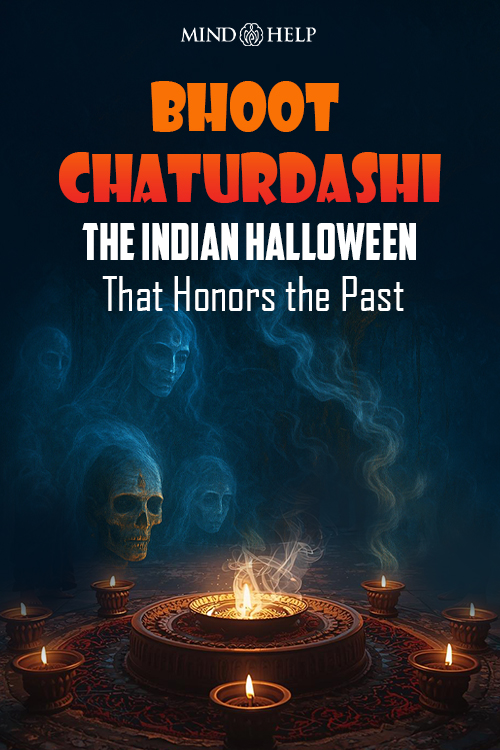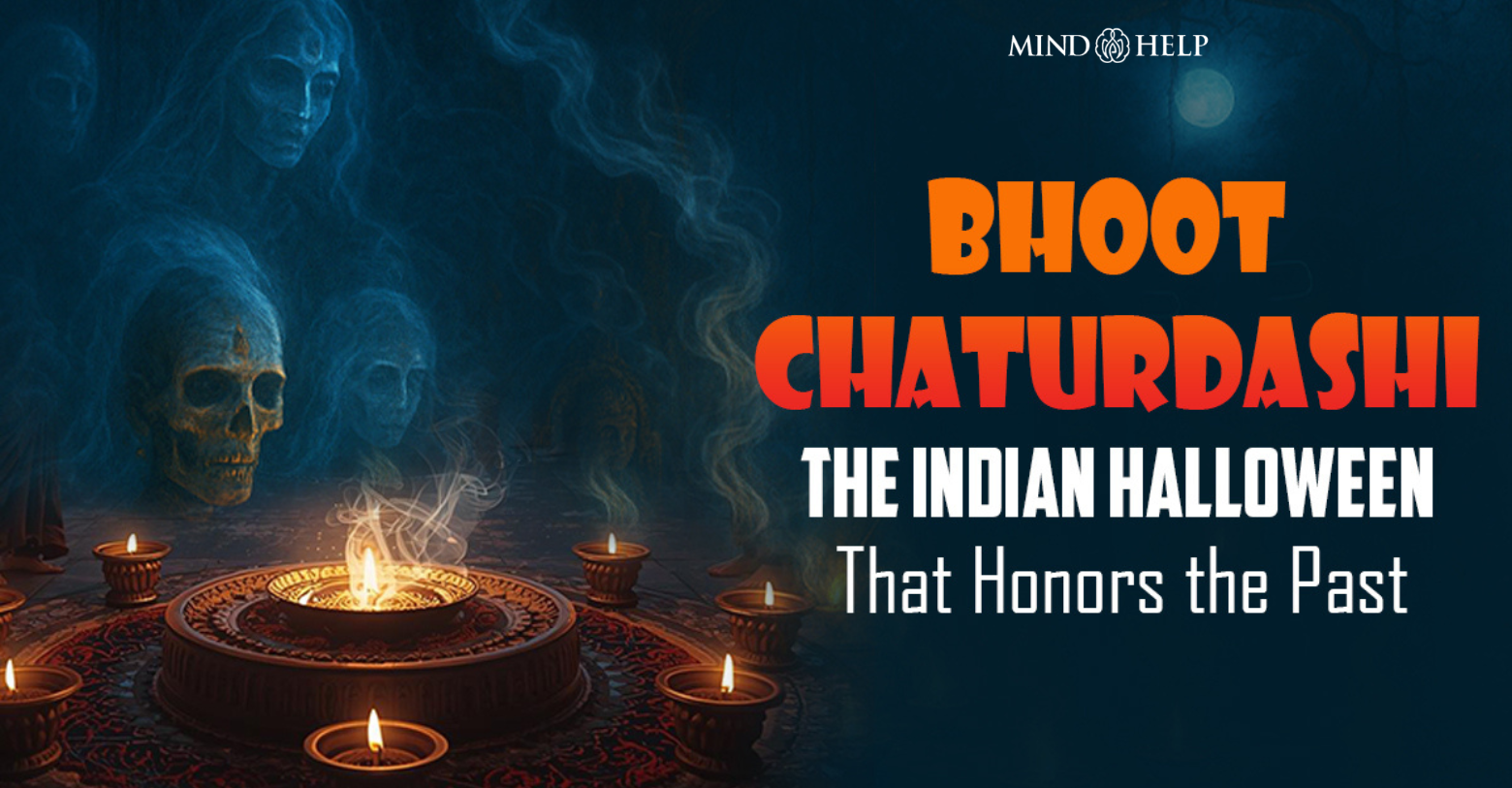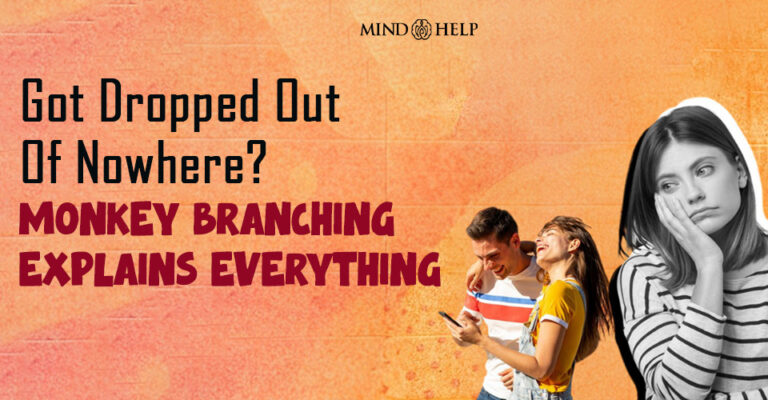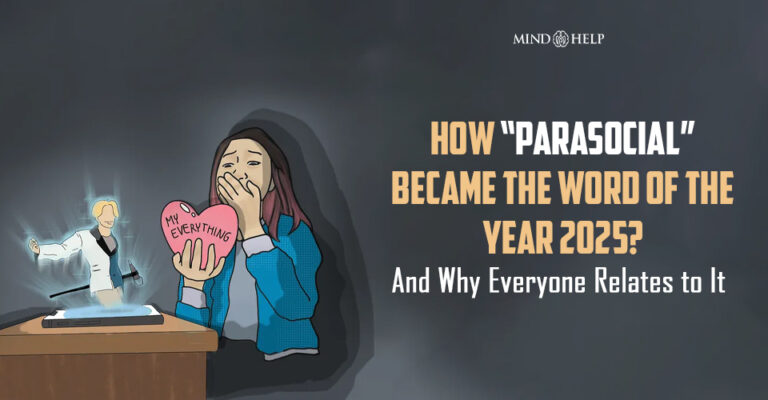Before the world lights up carved pumpkins and children go trick-or-treating, India celebrates a night that bridges life and death — a night steeped in myth, memory, and mystery. Known as Bhoot Chaturdashi, often referred to as the Indian Halloween or Hindu Halloween, this festival honors the departed, the ancestral past, and the unseen energies that shape existence.
While much of India prepares for Diwali, the festival of lights, in Bengal and parts of eastern India, another narrative unfolds — one that celebrates darkness as sacred and transformative. On the new moon night of October or November, just before Diwali, devotees invoke Goddess Kali, the fierce embodiment of time, death, and change.
Kali’s presence is symbolic — she stands at the threshold between destruction and rebirth, feared and revered as the annihilator of evil and the protector of the just. Her association with cremation grounds, spirits, and transformation makes her the spiritual centerpiece of this festival of the dead.
On the eve of Kali Puja, Bengalis observe Bhoot Chaturdashi, literally “the fourteenth night of ghosts.” In this ritual, “bhoot” signifies both “ghost” and “past,” representing a bridge between the living and their ancestral lineage.
Read: How To Get Rid Of An Evil Eye According To Vedic Wisdom
Bhoot Chaturdashi, The Indian Halloween That Honors the Past: 5 Interesting Details
1. Homecoming of the Ancestors
According to tradition, on this night, fourteen generations of ancestors return to visit their living descendants. To welcome and guide them, families light fourteen earthen lamps (diya/prodeep), placing them at doorways, windows, and courtyards. Each flickering flame is both an offering and a safeguard — illuminating paths for benevolent spirits while warding off malevolent ones.
This act of lighting lamps transforms homes into sanctuaries of remembrance. The golden glow symbolizes not only protection but also the enduring connection between the living and those who came before — a quiet cultural metaphor for continuity and belonging.
2. Whispers from the Past: Indian Ghost Stories
Every region has its ghost tales, and Bengal’s are among the most evocative. Indian ghost stories form a rich part of this night’s lore — the restless Pretni (spirit of an unmarried maiden), the wise Brahmadaitya (benevolent Brahmin ghost), and the dreaded Nishir Daak (the call of the night that lures souls away).
Traditionally, families gathered after dusk to share these tales, merging fear with fascination. Through storytelling, the eerie became symbolic — a reflection of moral lessons, unresolved desires, and the unseen dimensions of the psyche.
3. Rituals of Cleansing and Nourishment
Beyond the ghostly imagery, Bhoot Chaturdashi also carries deep psychological and ritual meaning. Before sunset, households are cleansed and purified. Families then prepare a dish made of fourteen types of leafy greens (Choddo Shaak) — a culinary symbol of health, protection, and ancestral offering.
The number fourteen appears again and again — lamps, leaves, generations — suggesting balance, continuity, and harmony between the living and the dead. Consuming Choddo Shaak is said to strengthen both body and spirit, reflecting the idea that spiritual wellbeing begins with mindful nourishment.
Before dining, a small portion of food is traditionally set aside as an offering to the ancestors or wandering souls — a symbolic gesture of remembrance, empathy, and acceptance of death as part of life’s natural rhythm.
4. Cultural Parallels: Samhain and the Western Halloween
What’s striking is how Bhoot Chaturdashi mirrors Samhain, the Celtic precursor to Western Halloween. Both festivals mark a liminal moment — when the veil between worlds grows thin, and spirits can cross over. In ancient Europe, bonfires blazed to honor ancestors and protect against spirits, just as lamps glow across Bengal to guide and guard.
Separated by geography and time, these rituals share a universal symbolism: the human need to understand death, connect with the unseen, and seek solace in light amidst darkness.
5. Narak Chaturdashi: The Triumph of Light Over Darkness
Elsewhere in India, this same lunar night carries another story — the story behind Narak Chaturdashi, also known as Narakasura Chaturdashi. The word “Narak” means “hell,” and this festival commemorates Lord Krishna’s victory over the demon Narakasura — a symbolic triumph of light over ignorance, of good over evil.
Different regions interpret the day uniquely. In Maharashtra, Gujarat, and Rajasthan, it is observed as Kali Chaudas, honoring Goddess Kali’s power to destroy negativity. In Bengal, it becomes Bhoot Chaturdashi, the night of spirits. In Goa and southern India, devotees crush bitter berries to represent the demon’s defeat — an act of purification and renewal.
Together, Bhoot Chaturdashi and Narak Chaturdashi reveal the spiritual diversity of India’s festivals of the dead — each expressing a different facet of humanity’s dialogue with mortality and transcendence.
The Light That Defies Darkness
Whether it’s Indian Halloween, Hindu Halloween, or Western Halloween — all these traditions stem from the same impulse: to honor what we fear, to remember what we’ve lost, and to find light in the shadows.
Each diya, candle, or jack-o’-lantern we light whispers the same truth —
we fear the dark only until we learn to illuminate it.
Happy Halloween!








